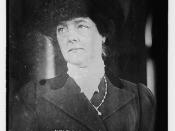Name of Industry or Sector (Strategic Group)The Pharmaceutical Industry
Threat of new entrants
Several aspects have been taken into consideration for the threat of new entrants. Firstly, the expenditure of R&D is too costly, especially for the branded prescription drugs. Regarding the pipeline, it takes too long a time for new drugs to move from discovery to market, nearly 12 years. In this situation, the spending on R&D is high due to the long lead times which have something to do with the clinical testing. Furthermore, the growing spending on R&D and contrarily the decline of new drugs reaching market indicate that the market yield is falling. Considering the patent protection, one-third of the top 35 molecules (NCEs) will counter patent expiry by 2004 in which the generics will not be against by the regulations. Finally, the spending for pharmacy is controlled by governments and their methods vary from each others and sometime are very strict and combined with many approaches.
A further obstacle is the government approvals slow down. In the 1990s, the FDA approved 35-45 new compounds a year but in the first nine months of 2001, only 11 were approved (Smith).
Threat of substitute products
As surgery develops, many diseases and illness can be cured through operations instead of taking pills, which maybe more convenient and, time and money saving. Moreover, being without side effects, surgery has an advantage over drugs. So it seems that it is unnecessary to be intervened by drugs. However, the threat is low to the industry.
Power of customers
As there are many ways to get information about drugs, such as TV advertisements and internet, customers have many options and high awareness of price. Furthermore, the convenient transportation and different distributions offer consumers various ways to purchase. For example, they can prefer...


